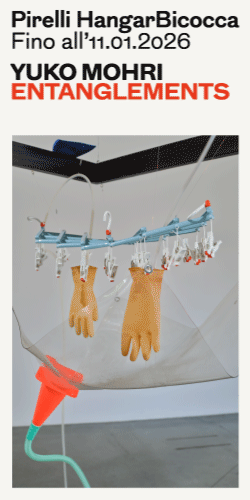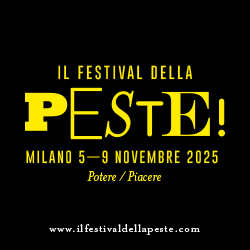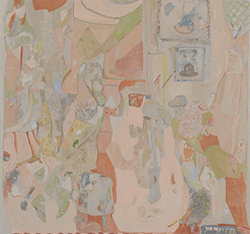
During a total solar eclipse, it would be possible to see and measure the position of a star constellation behind the sun. If Einstein’s General Relativity theory was right, the enormous mass of the sun would deform the space around it and consequently deviate the trajectory of the light emitted by the stars on its way to Earth. By taking photographs during and after the phenomenon, astronomers would be able to tell if there was indeed a difference between real and apparent positions of the stars. With this intent, in 1919 two British expeditions were organised to register a total solar eclipse: one led by Arthur Eddington went to Ilha do Príncipe in África, and the other led by Andrew Crommelin headed to Sobral, in the northeast of Brazil. The video ‘Sol Preto’ tells the story of the Brazilian expedition, depicting a visit to the small countryside city nowadays and reconstituting the story from the local perspective.

On the right hand side of the picture, we see Teófilo H. Lee, a member of the Brazilian team of astronomers, looking up to the sky through a telescope. On the left side, we see an unknown barefoot boy holding a broom with one hand and protecting his eyes from the sun with the other. All the details in this photograph seem to register the clash between the scientific inquiry and the local population. The picture is crossed by two axis: the diagonal traced by the telescope, a symbol of knowledge, points up to what is out of the frame; while the diagonal traced by the broom, a handmade symbol of subservience, points down to the ground. We see the white man unaware that the picture is being taken, while the black boy stares at the camera smiling. We cannot tell if his smile follows unconsciously his gesture of blocking the sunlight that the scientist aims for, or if his smile comes sarcastically from the awareness of his presence in the records of early modern physics.

Back then, Sobral, a village located in the driest region of Brazil, was marked by poverty, illiteracy, technological backwardness and extreme religiosity. Among the population, rumours about the end of the world mixed with popular superstitions spread with the arrival of the scientists. The faith of the population found shelter in the figure of Don José Tupinambá da Frota, bishop, founder of the local newspaper ‘Correio da Semana’, and one of the authorities that welcomed the foreign astronomers. Being responsible for many constructions in the city, Don José became more than a religious figure, acquiring a political responsibility. His old house hosts nowadays a museum under his name, a colonial building where all his archive, collection of objects and documents related to his legacy are kept.



The reconstitution of the eclipse’s history can be found in the editions of Don José’s newspaper. The resolutions of the First World War and the 31th anniversary of the abolition of slavery in Brazil stamped the first pages during the days prior to the natural phenomenon. As a catholic newspaper, “Correio da Semana” had all the news filtered by Christian morals and believes. On 10-May-1919 it was published:
“At this moment Sobral hosts the two illustrious astronomers, Dr. Andrew Crommelin and Dr. Charles Davidson, that were commissioned by the British government to observe the solar eclipse. We are very pleased to register in these lines that both of them are practicing catholics. Correio da Semana cordially greets our famous guests.”
—Correio da Semana, 10-May-1919, Sobral, free translation from Portuguese

The newspaper was also a tool used by Henrique Morize, the Brazilian scientist who coordinated the expedition. Morize had an open channel to publish informations and instructions, most of the times with paternalist overtones, in order to gain the confidence of the locals and to calm people down, ensuring that the eclipse didn’t bring any harm, didn’t announce plagues, floods nor droughts.
“In order to be a success, the expedition needs full calm and perfect silence. For this reason, it is requested from the cultured public of this city, that no noise should be made, not even from musical performances, during the whole duration of the eclipse. Fireworks must not be used, as it is common to be found in delayed places. Their brightness can be recorded on the photographic plates used to register the phases of the eclipse. By doing so, the population of this futuristic city will collaborate with the scientific commissions and will make justice to the acknowledgment in our research […] that once successful will determinate a new solid base to Einstein’s theory, opening up new horizons to the scientific community.”
—Correio da Semana, 24-May-1919, Sobral, free translation from Portuguese



In the day of the eclipse the weather conditions were not the best. The morning was cloudy and the scientific community was worried that the fail of their first attempt during the eclipse of 1912 could happen again for the same reason. But moments before the eclipse the sky cleared up, providing a perfect view of the sun. The population filled up the churches, animals hid inside the barns, and cocks sang twice that day. The ones who saw the eclipse used pieces of glass smudged on fire to protect their eyes. The local newspaper noticed cases of houses having their windows broken, due the short amount of glass available and the fear of looking straight up. Pregnant women were forbid to see the eclipse. People hit metal cans to keep the plants awake.
“I was in the farm of my grandfather on top of the hill. The workers were close to the house. When the eclipse started, the workers run inside, and the house got completely packed. Some were crying, others cursing, and others yet saying the world would end. My mom was disoriented with the flux of people in the house. The chickens went inside. It didn’t get so dark, it was bright around the sun. People got afraid. My father in law had a daughter in law, the wife of my brother in law Antero, that had part of her face coloured like coffee with milk. Her father said that it was because of the eclipse — her mother was pregnant and went outside to look at it.”
—Testimony of Maria Amélia Ferreira Portella, born in 29-March-1906, Sobral. Free translation extracted from “Eclipse de 1919: múltiplas visões”, org. Maria Norma Maia Soares, ed. UVA, 2003


The revelation of the photographic plates were finished in the 7-June-1919, after the comparative pictures were taken from the same spot after the eclipse. This process was specially complicated due the extreme heat and the impossibility of getting ice in order to cool the water down for the revelation procedure. Andrew Crommelin wrote in his diary that the only way of doing so was by working over night with the clay pots normally used by the locals to preserve the fresh water (“approximately under the 20ºC”). A symbolic moment in which the local technology contributed to reveal the new discovery.
The results of both expeditions and the official confirmation of General Relativity theory’s first proof were announced in the 6-November-1919 in a meeting by the Royal Society and Royal Astronomical Society in London. In 1999, the Museu do Eclipse was created in front of the church Senhora do Patrocínio, in the same place where the expedition observed the event. In 2015, a planetarium was built next to it. After the departure of the astronomers, the city got back to its countryside’s reality. After finding itself in the center of the biggest modernity’s paradigm shift, Sobral still faced the socio-economic problems of the ancient Brazilian sertão, where the time does not seem to have passed.








